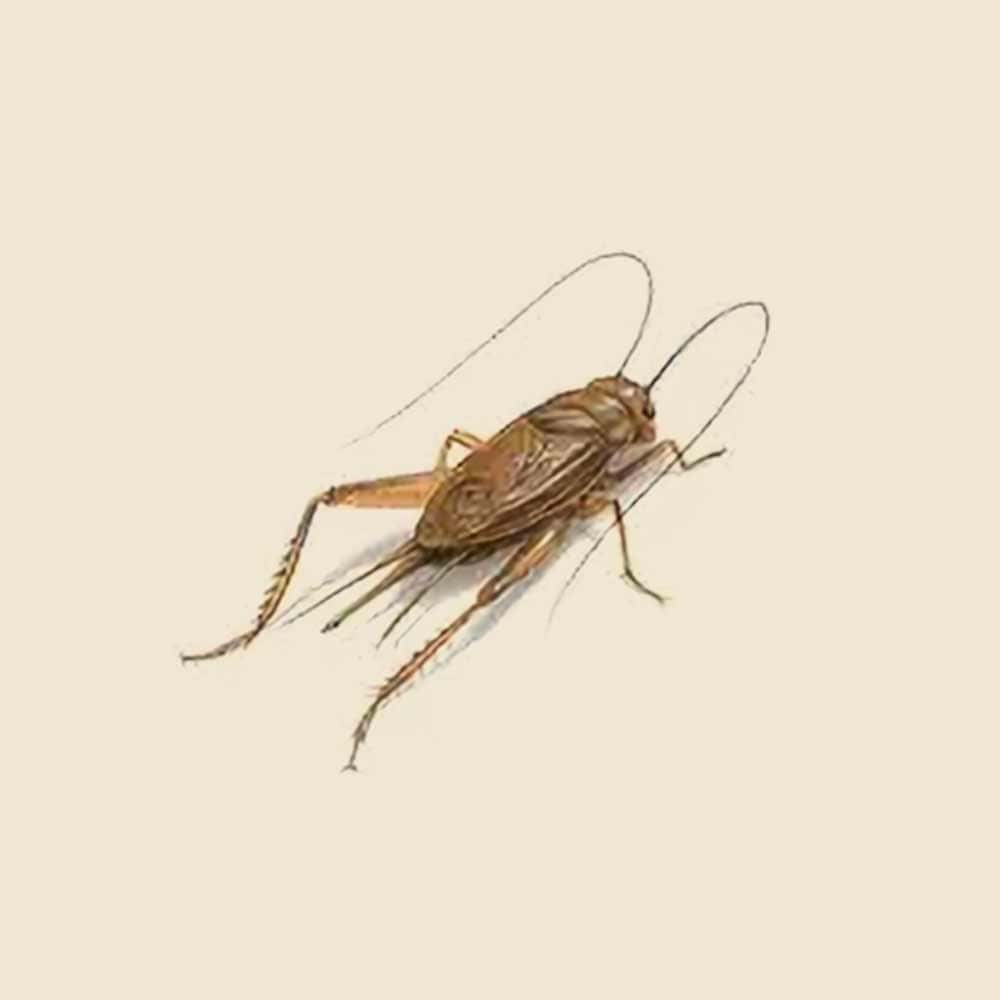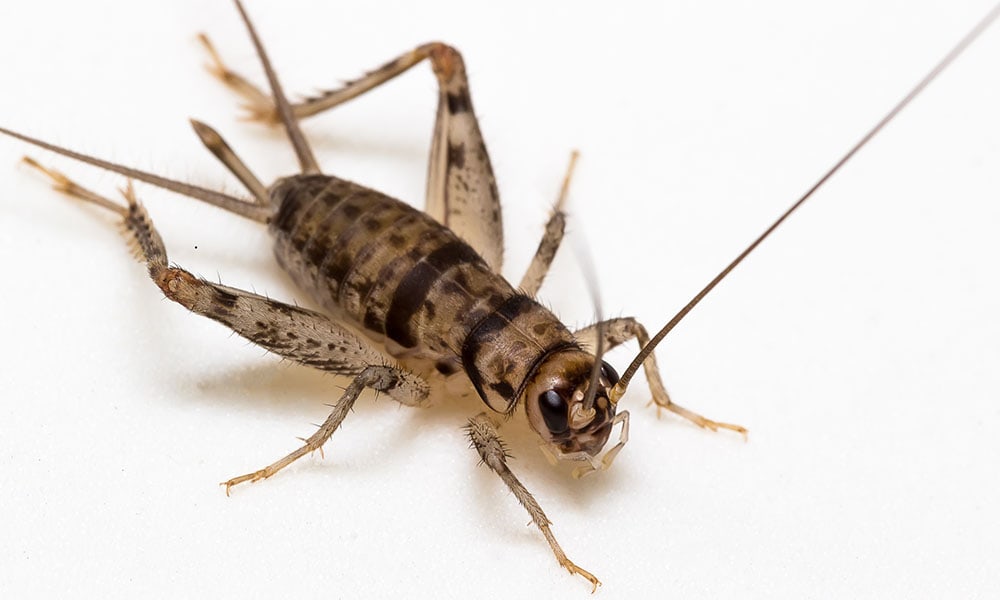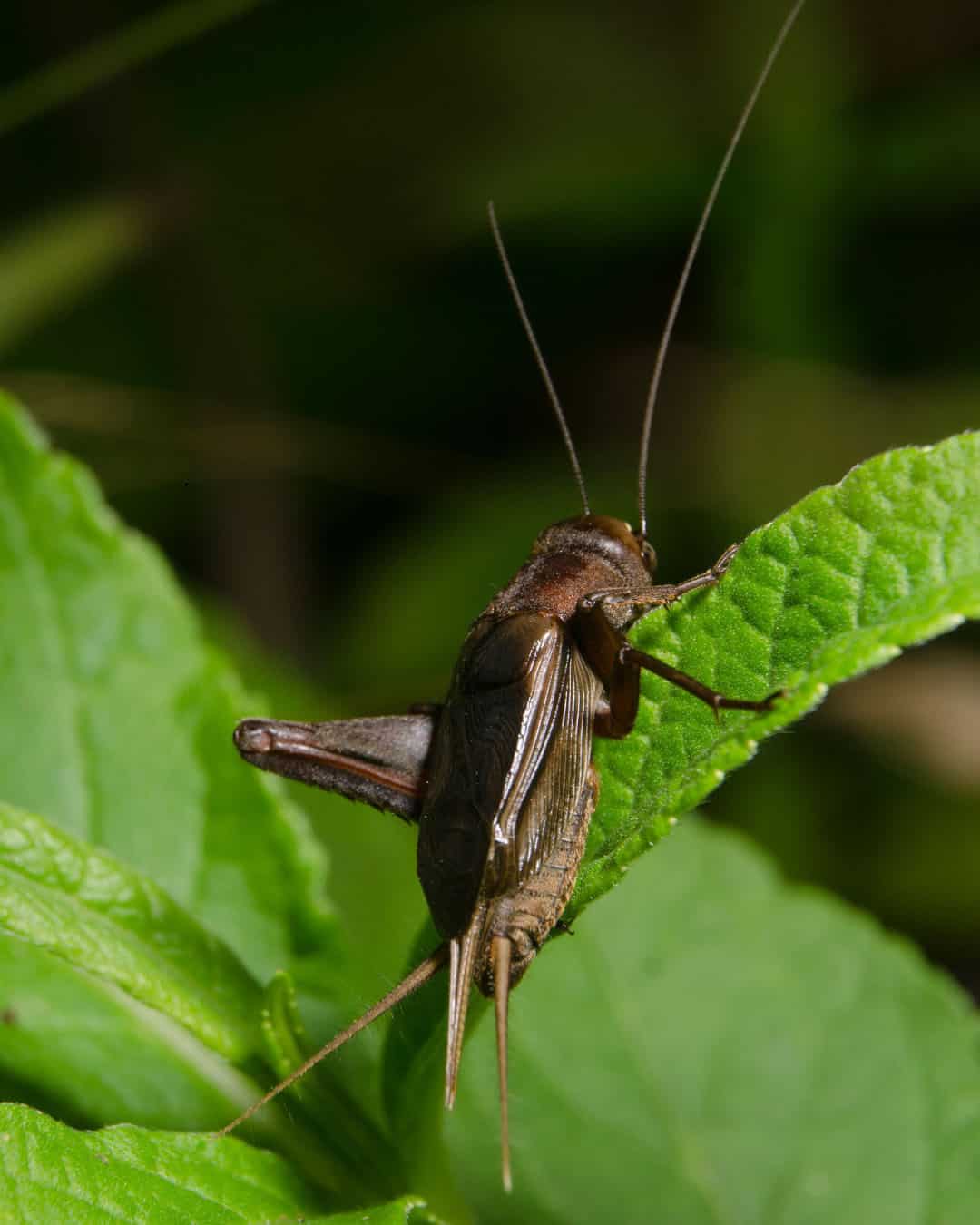House Cricket Facts & Information
House crickets, known for their distinctive chirping sounds and nocturnal habits, can become a nuisance when they invade homes and buildings. Their presence is often bothersome and can indicate larger pest management issues.

Acheta domesticus
What You Need To Know About House Crickets
What do house crickets look like?
House crickets are small to medium-sized insects, typically measuring about 3/4 to 1 inch in length. They are light brown to yellowish in color with three dark bands on their head. They have long, slender bodies with long antennae and large, prominent hind legs adapted for jumping. Their wings are well-developed, but they are not strong fliers.
What do house crickets eat?
House crickets are omnivorous and feed on a variety of organic materials. Their diet includes grains, fruits, vegetables, and even other insects. In indoor environments, they may scavenge for food scraps, textiles, and other household items.
What sort of habitat do house crickets live in?
House crickets prefer warm, moist environments and are commonly found in indoor spaces such as basements, attics, kitchens, and bathrooms. They are attracted to dark, undisturbed areas where they can find shelter and food. Outdoors, they may be found in garden beds, under debris, and in other sheltered locations
How do house crickets commonly behave?
House crickets are nocturnal and are most active at night. They are known for their distinctive chirping sound, which is produced by rubbing their wings together (stridulation). This sound is used by males to attract females and establish territory. They are also known for their ability to jump and their tendency to invade homes in large numbers.
Did you know this about house crickets?
House crickets are often associated with good luck and prosperity in some cultures due to their chirping sound, which is believed to bring fortune. Interestingly, their chirping can also be used to estimate the temperature; the number of chirps per minute can be correlated with the temperature in Fahrenheit. This phenomenon, known as Dolbear’s Law, highlights the cricket’s sensitivity to environmental changes. Despite their association with good luck, house crickets can be a nuisance and cause damage to fabrics and stored food if they invade indoor spaces in large numbers.
Understanding House Cricket Infestations
Understanding house cricket infestations is crucial for effective control. House crickets are small, brown insects with long antennae and distinctive chirping sounds produced by rubbing their wings together. They are typically found in dark, damp areas such as basements, crawl spaces, and under appliances. They are nocturnal and may enter homes in search of food, moisture, or shelter.

How Hearts Handles House Cricket Treatment
Hearts Pest Management employs an integrated pest management approach to handle House Cricket infestations.
House Cricket Inspection
House Cricket Treatment
House Cricket Prevention
Educational Resources

Think You Might Have a House Cricket Infestation?
At Hearts Pest Control, we understand the challenges associated with House Cricket infestations and are here to provide professional solutions tailored to your needs. Flourishing in warm and humid climates, they are prevalent in many regions, including San Diego County, Orange County, and Los Angeles County.